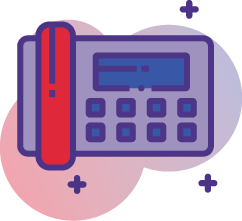
Last week’s video and article talked about how to deal with the anxiety of going back to work. Many people are afraid of what their workplace will look like, but they also fear losing their job if they don’t return to work. Learning to deal with this anxiety is essential.
One of the four steps to dealing with anxiety, which we outlined in the video and the article, is to set boundaries. By knowing what you will accept and what you will not accept, you will be more prepared, which should lessen your anxiety.
In this article we’ll look at how to set those boundaries—deciding what you’ll accept from other people and what you’re willing to do or not do, as it pertains to staying safe and socially distanced at work. The second thing we’ll cover here is knowing how to enforce those boundaries.
Enforcing the boundaries you have set for yourself will be uncomfortable at first if you aren’t prepared. You don’t want to damage your work relationships, but you need to feel safe in your work environment as well.
[ctt template=”3″ link=”Db65T” via=”yes” ]Enforcing the boundaries you have set for yourself will be uncomfortable if you aren’t prepared.[/ctt]
Here are three things to keep in mind to help you feel less anxious when enforcing your boundaries.
- Know your boundaries
You need to know what boundaries are important enough for you to be willing to enforce them. In other words, where you “draw the line”—in this case, perhaps literally.For instance, if someone coming into your cubicle space is an issue for you, you need to be confident that, if someone does enter your cubicle space, you will say something to stop them. Not knowing what your response will be if it happens will cause you anxiety.
Perhaps your issue is people touching you. Are you prepared to tell a friend or family member that you are not comfortable with any touch at all? Or maybe you are okay with being closer than six feet with your friends as long as everyone wears a mask.
Whatever your boundary is, you have to be prepared to know when someone has crossed the line. Know what your limits are, so you can decide whether (and how) you want to enforce them.
- Be prepared
Before any boundary has been crossed, you need to work on what your response will be if the boundary is crossed. Prepare what you are going to say, how you will let others know that you are uncomfortable, and how you will end the interaction without an awkward silence. You can’t just “wing” this kind of discussion. Preparing will help ensure that you don’t cause unnecessary damage to your work relationships.Write out what you want to say. (And keep in mind, no matter how clear and respectful your conversation notes are, resist the urge to send them in an email instead of going through with the conversation at the time.)Let’s say I am working in my cubicle and a coworker steps into that space, which is within the six-foot boundary. I need to be prepared with what I will say. Will I react negatively and say “get out of my space!” or will I be aware that just because I am uncomfortable it doesn’t mean that everyone is? Maybe I will need to approach it in a more relaxed way, such as: “We are closer than six feet, and I would feel more comfortable if you back up a bit, please.”What is your style going to be? Confrontational, direct, relaxed, joking? If you aren’t prepared, you may communicate your message in a manner that isn’t your intent. Perhaps your intention is to be relaxed yet firm, but your tone comes across as aggressive and confrontational. You need to use a style that fits your message.
If you plan on having your parents over to your backyard patio (if permitted) for a social visit, are you prepared to ask them in advance to wear a mask, if that’s what you want? How will you do that without making it sound like an ultimatum? Will you let them know that you will be happy to see them, but cannot hug them? How will you do that without hurting your parents’ feelings?
Thinking through how your message will be received will help you craft it to ensure the delivery is what you are hoping for. By not preparing your words in advance, you are running the risk that your message will not only be received with the wrong intent but could potentially damage some of your relationships.
- Be clear in your communication
By knowing exactly what your boundaries are, and by being prepared, you can communicate more clearly. For instance, if your office has a rule about one person being in the elevator at a time, how will you let your coworker know that this is a firm boundary for you? Let’s assume that you and your coworker, Megan, went for a socially distanced walk at lunch. On the way back to the office, Megan steps into the elevator with you.
Do you say, “Oh, Megan, you are such a rule breaker! We just followed the rules about walking outside, and now you want to break the rules about elevators? Do you want to get us in trouble? What if we get caught?” This kind of communication could potentially cloud the issue, since Megan may think this isn’t a hard line for you, but more of a suggestion and that “getting caught” is more the issue than your safety or comfort.
On the other hand, you could say, “Megan, I would prefer it if we took separate elevators as it says in the office guidelines. You take this one, and I’ll get out and wait for the next elevator.” This clearly communicates to Megan that your intent is to follow the office guidelines about elevator usage.
Lack of focus could sabotage your intent, so make sure your words are clear.
[ctt template=”3″ link=”f5Vj8″ via=”yes” ]Lack of focus could sabotage your intent, so make sure your words are clear.[/ctt]
- Begin with the end in mind
You’ve heard the expression, “begin with the end in mind,” from Dr. Stephen Covey. That means figuring out what end result you want and making sure you’ve designed a way to get there directly.If I am going to have a conversation about touching office supplies, my goal is that my coworker will agree that they will not touch anything that belongs to me.
You need to know the end result you want before you begin the conversation. It doesn’t mean that is what you will agree to in the end, but it gives you an excellent place to begin your negotiations if required.
Returning to work and opening our social bubbles is filled with anxiety for many people. We need to be comfortable knowing what our boundaries are and what we will do if anyone crosses them.
With a little practice, a little focus, and clarity of intent, you can ensure that all parties feel respected, valued, and slightly less uncomfortable—and you’ll be much more likely to have your boundaries respected.









